Potrebujeme váš súhlas na využitie jednotlivých dát, aby sa vám okrem iného mohli ukazovať informácie týkajúce sa vašich záujmov. Súhlas udelíte kliknutím na tlačidlo „OK“.
ASTM F2903-11
Standard Guide for Tissue Engineered Medical Products (TEMPs) for Reinforcement of Tendon and Ligament Surgical Repair (Withdrawn 2020)
Automaticky preložený názov:
Štandardné príručka pre prípravky tkanivového inžinierstva liečiv (brigádnikov) pre vystuženie Tendon a väz chirurgickej opravy
NORMA vydaná dňa 1.3.2011
Informácie o norme:
Označenie normy: ASTM F2903-11
Poznámka: NEPLATNÁ
Dátum vydania normy: 1.3.2011
Kód tovaru: NS-54704
Počet strán: 7
Približná hmotnosť: 21 g (0.05 libier)
Krajina: Americká technická norma
Kategória: Technické normy ASTM
Kategórie - podobné normy:
Anotácia textu normy ASTM F2903-11 :
Keywords:
Achilles, bone anchors, ligament, quadriceps, reinforcement, repair, rotator cuff, sutures, tendon, ICS Number Code 11.100.99 (Other standards related to laboratory medicine)
Doplňujúce informácie
| Significance and Use | ||||||||||||||||||||||||||||||||||||
|
Injuries to tendons or ligaments are frequently treated by surgery to repair the damaged tissues and facilitate the healing process. The potential of TEMPs to enhance the outcomes (including function, pain, anatomy) of the surgical repair has been recognized. Examples of tissues that when injured may be appropriate for repair using TEMPs: rotator cuff with a partial or full tear; Achilles tendon; Achilles tendon after harvesting for anterior cruciate ligament repair; patella tendon; patella tendon after harvesting for anterior cruciate ligament repair; quadriceps tendon; posterior cruciate ligament; medial collateral ligaments; lateral collateral ligaments; flexor tendons. TEMPs may be used with the intent to improve the surgical outcome of tendon or ligament repair by (a) assuming some of the mechanical load experienced at the repair site to stabilize the surgical repair, (b) improving the natural biological healing process, or (c) a combination of these mechanisms. TEMPs should improve clinical outcome. This may be accomplished by reducing or eliminating pain, returning function, shortening the recovery time following surgery, facilitating early mobility, improving return of strength, improving mobility, or other clinically relevant parameters. The mechanism used by TEMPs to improve surgical repair should be understood and this conclusion should be supported by experimental results and should be supportive of the primary function of the TEMP. TEMPs with the primary function of mechanical reinforcement may also have a secondary, biological function. When the product is used to improve the body’s natural biological repair process of tendons or ligaments, the product should allow cell attachment, migration, infiltration, extracellular matrix deposition and organization, formation of tendon or ligament repair tissue, integration with adjacent tendon, ligament or bone, tendon-bone attachment, or more than one of these actions. When the TEMP is used to provide a mechanical support of the surgical repair of a tendon or ligament, the product may provide enhanced mechanical properties of the repaired construct immediately after the surgery. Ideally, TEMPs would have mechanical properties similar to the uninjured native tissue being repaired. After surgery, the TEMP should limit the amount of tendon/ligament separation from the bone, or separation of the fractured ends of the tendon or ligament, or reduce the number of patients that have these as outcomes of the surgery. The TEMP may allow functionality to return to the repaired tendon or ligament in a shorter time than without the use of the product. |
||||||||||||||||||||||||||||||||||||
| 1. Scope | ||||||||||||||||||||||||||||||||||||
|
1.1 This guide is intended as a resource for individuals and organizations involved in the development, production, and delivery of tissue engineered medical products (TEMPs) intended to provide a mechanical (functional) reinforcement of the surgical repair of tendons and ligaments. 1.2 Surgical repair can include procedures that repair tendon to tendon, tendon to bone, tendon to muscle, ligament to ligament, and ligament to bone. In the context of this guide, a tendon is a fibrous cord or band that connects a muscle to a bone or other structure and consists of both dense collagenous fibers and rows of elongated tendon cells. In contrast, a ligament is a band or sheet of fibrous tissue connecting two or more bones, or cartilagenous structures. 1.3 Examples of TEMPs for use in reinforcement of tendon or ligament repairs include extracellular matrices (including allograft tissue, xenograft tissue, and tissue engineered extracellular matrix), polymeric matrices, membranes, or combinations of two or more of these, with or without cells and/or molecular mediators, where the function is to reinforce the surgical repair of tendon to tendon, tendon to bone, tendon to muscle, ligament to ligament, or ligament to bone. 1.4 The products may be rapidly degrading, slowly degrading, or non-degrading. 1.5 The guide is not intended to apply to TEMPs that have a primary function to induce a biological repair through cell or molecular action, although biologic activity may be a feature of the TEMPs. Examples of products or product concepts that are not included are (a) growth factors or cytokines applied to a biologic or synthetic scaffold, and (b) platelet-enriched plasma applied to or within a biologic or polymeric scaffold, where the primary function of the product is biologic. 1.6 The guide is not intended to apply to TEMPs that have a primary function to induce a chemical repair. An example of a product or product concept that would not be included would be a polymeric matrix containing reagents that glue collagenous tissues together. 1.7 The guide is not intended to apply to TEMPs that are designed to be used to achieve primary surgical repair of injured tendons and ligaments. 1.8 The guide is not intended to apply to TEMPs that are designed to replace tendons or ligaments. 1.9 The values stated in SI units are to be regarded as standard. No other units of measurement are included in this standard. 1.10 This standard does not purport to address all of the safety concerns, if any, associated with its use. It is the responsibility of the user of this standard to establish appropriate safety and health practices and determine the applicability of regulatory limitations prior to use. |
||||||||||||||||||||||||||||||||||||
| 2. Referenced Documents | ||||||||||||||||||||||||||||||||||||
|
Podobné normy:
Historická
1.3.2011
Historická
1.3.2012
Historická
1.2.2013
Historická
15.10.2010
Historická
1.12.2011
Historická
1.4.2012
Odporúčame:
Aktualizácia technických noriem
Chcete mať istotu, že používate len platné technické normy?
Ponúkame Vám riešenie, ktoré Vám zaistí mesačný prehľad o aktuálnosti noriem, ktoré používate.
Chcete vedieť viac informácií ? Pozrite sa na túto stránku.


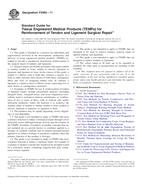
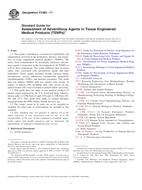 ASTM F2383-11
ASTM F2383-11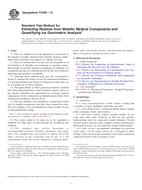 ASTM F2459-12
ASTM F2459-12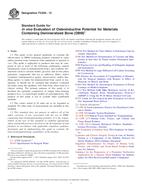 ASTM F2529-13
ASTM F2529-13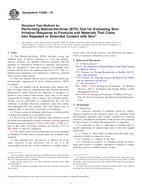 ASTM F2808-10
ASTM F2808-10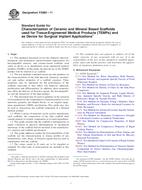 ASTM F2883-11
ASTM F2883-11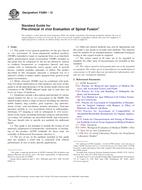 ASTM F2884-12
ASTM F2884-12
 Cookies
Cookies
